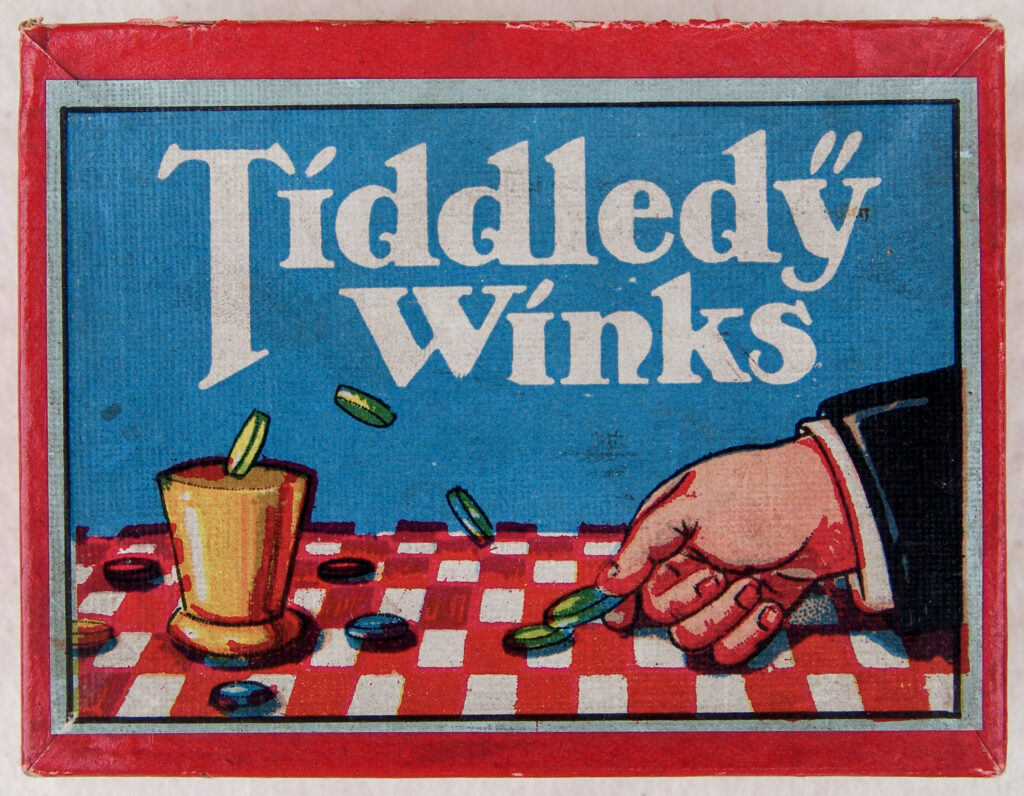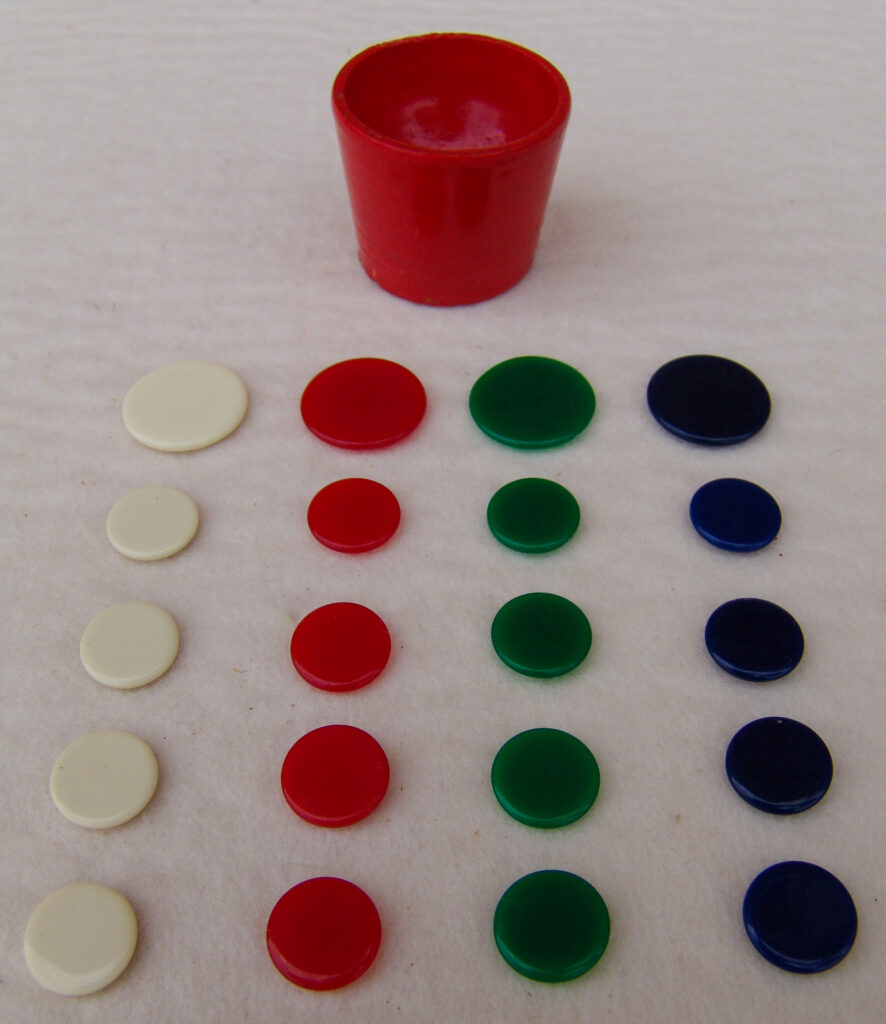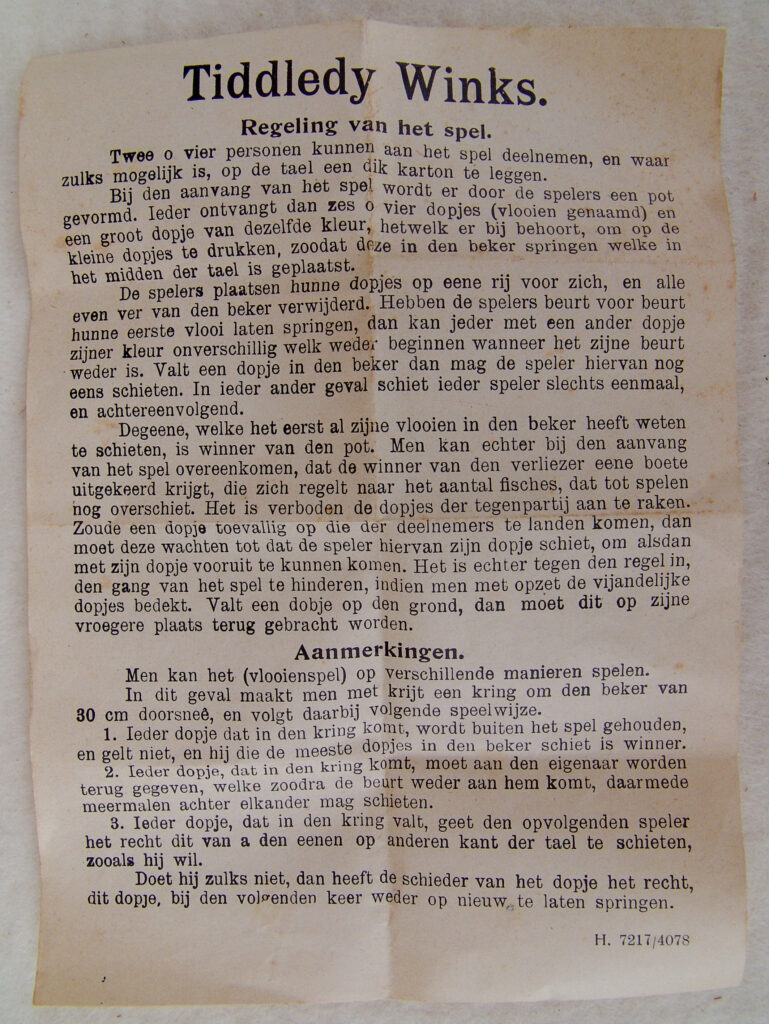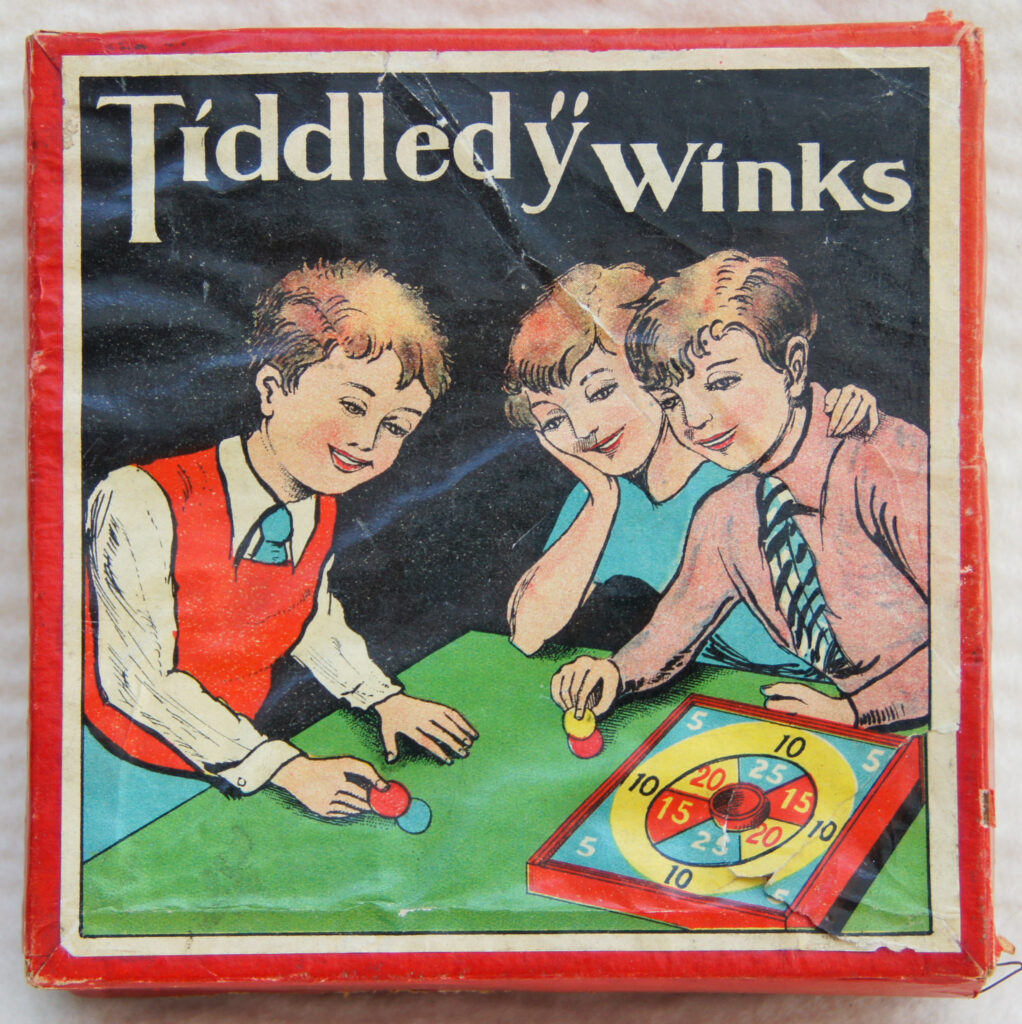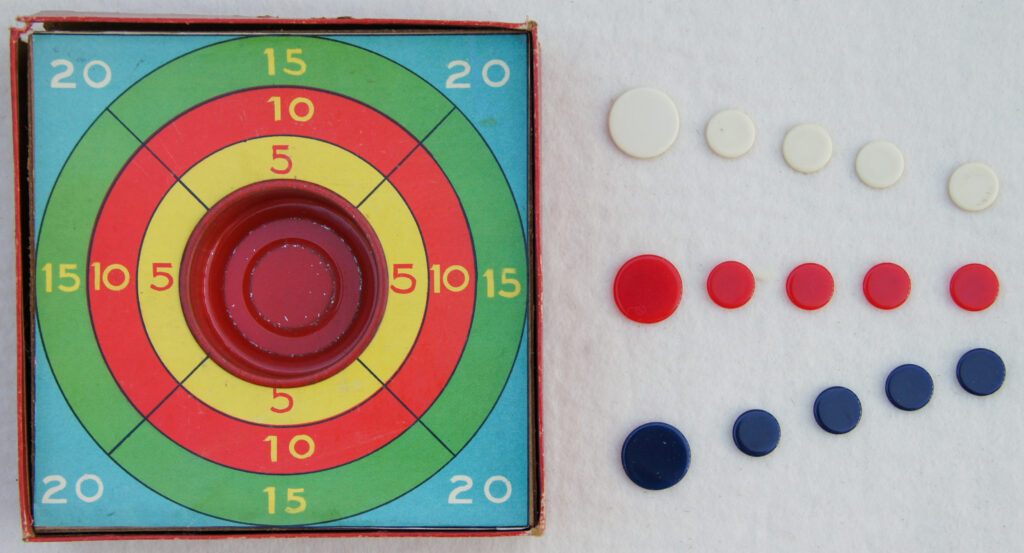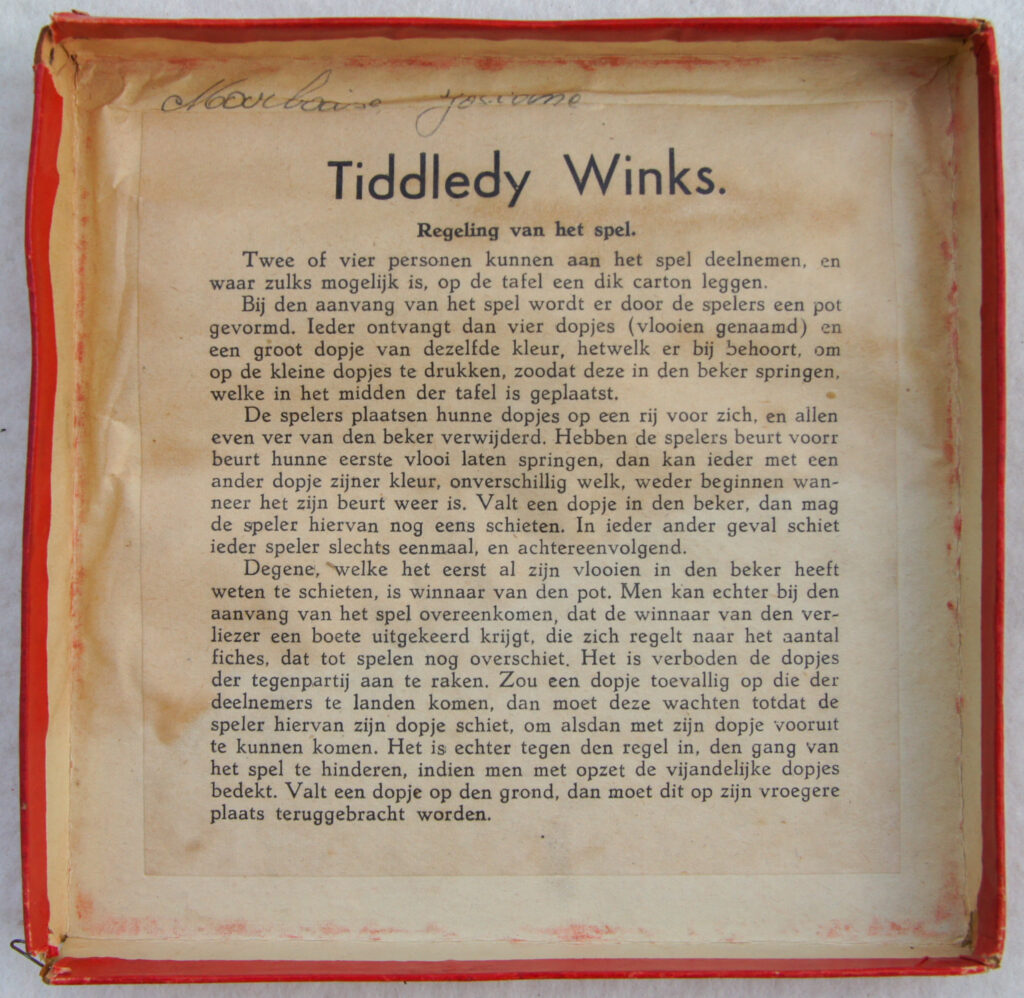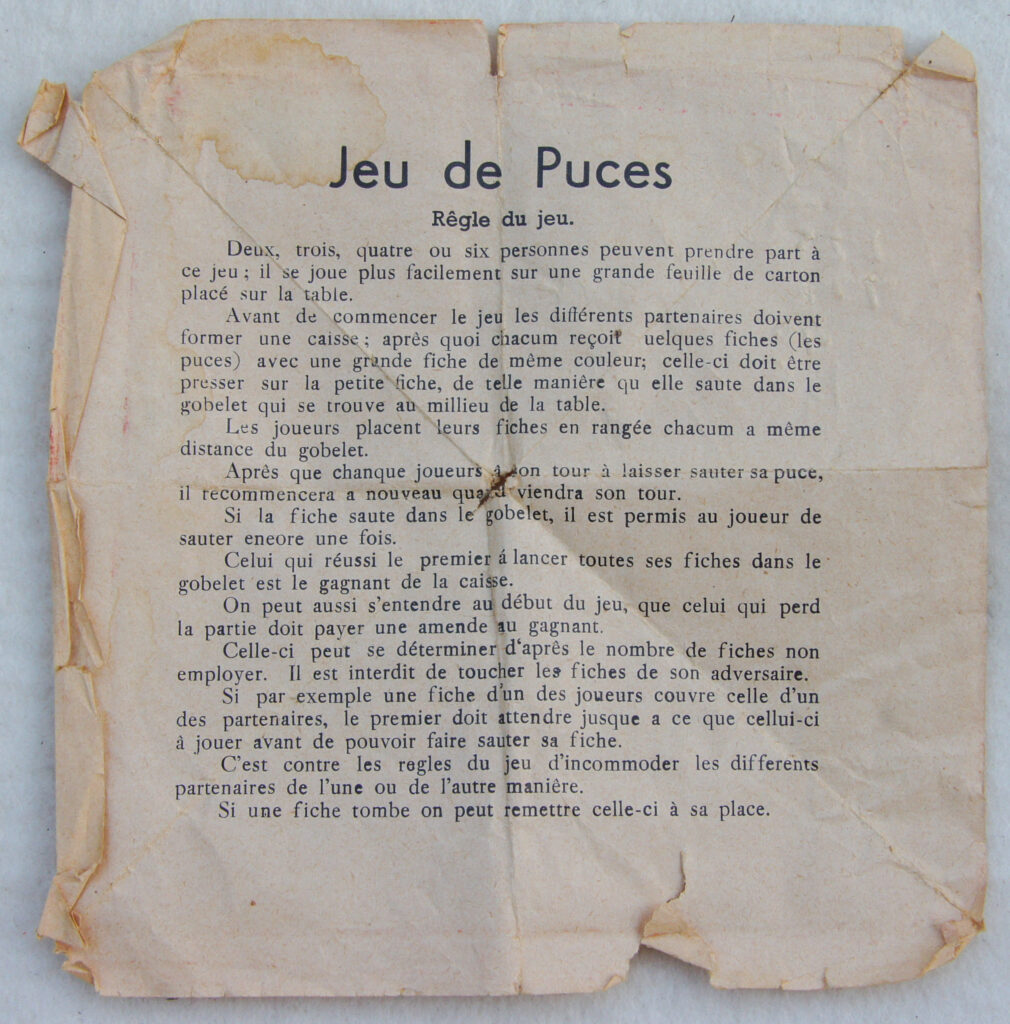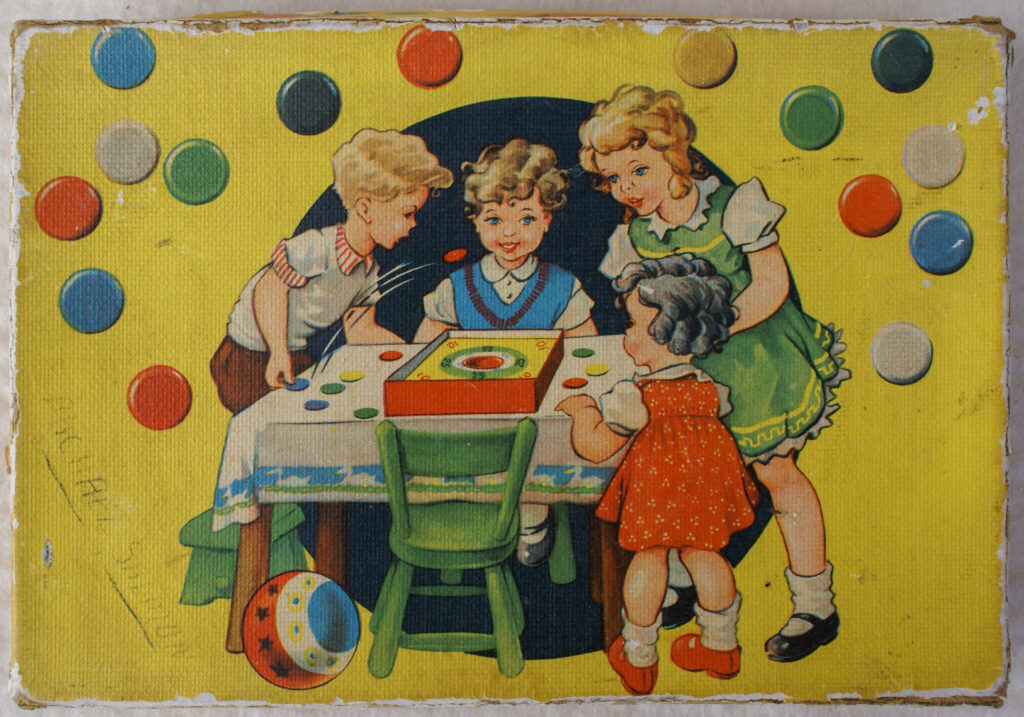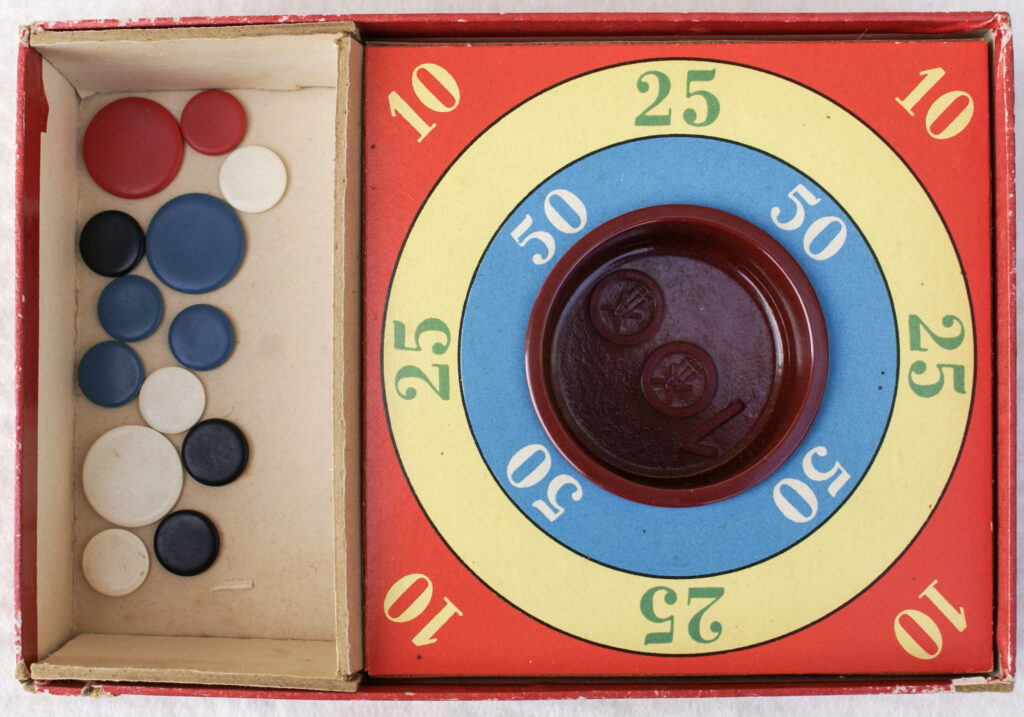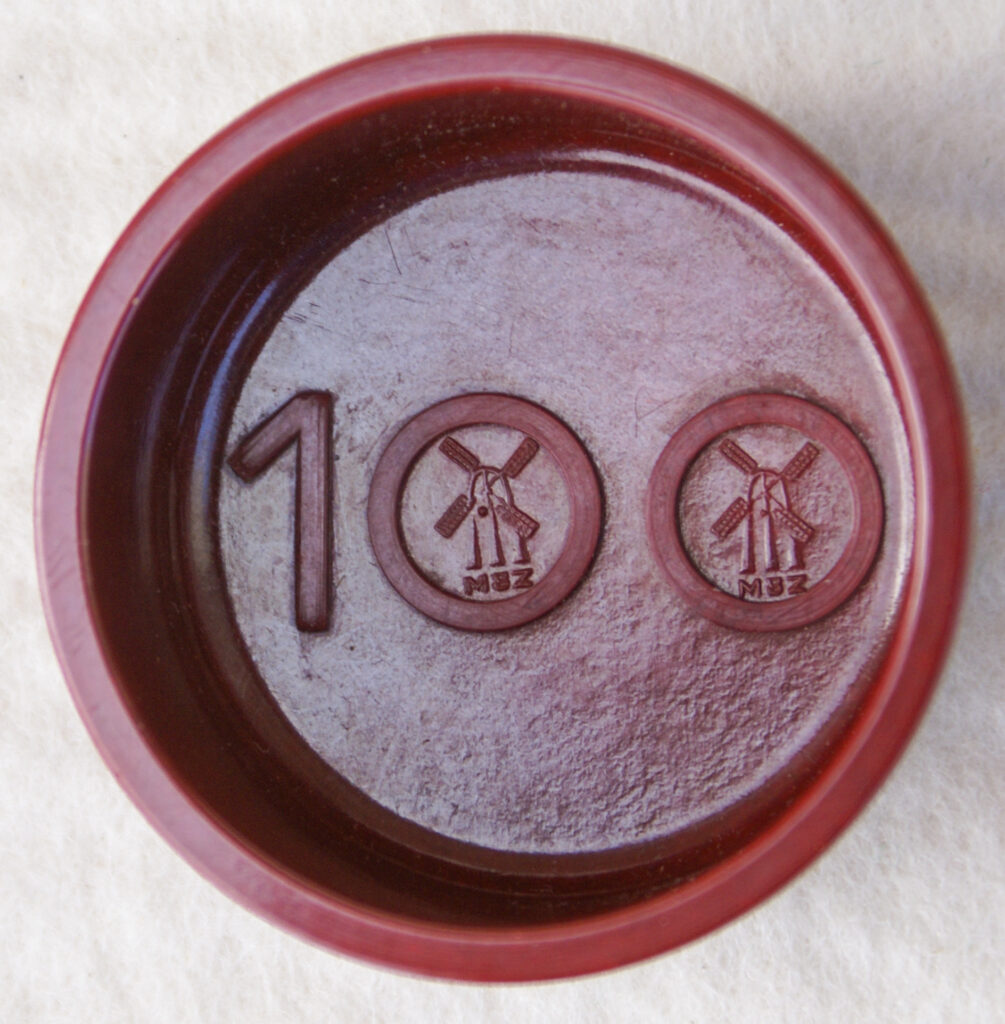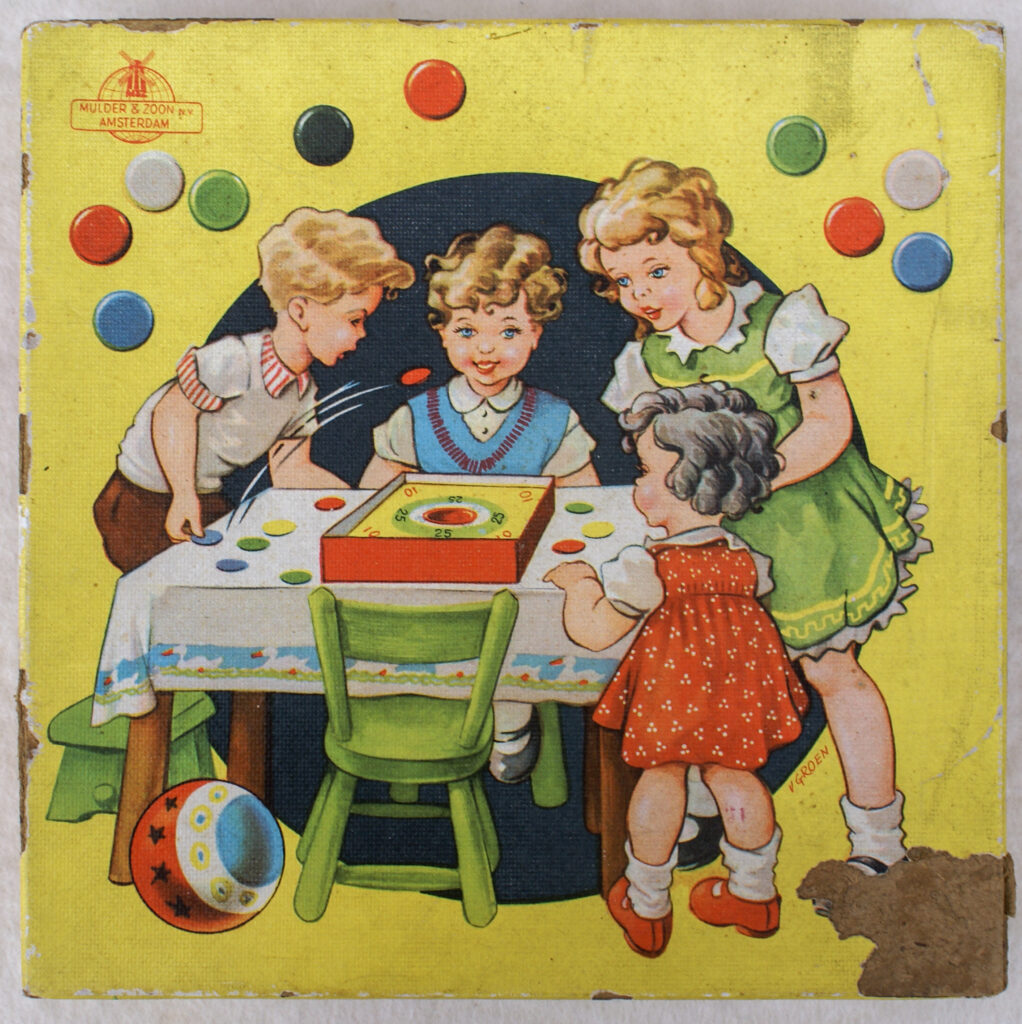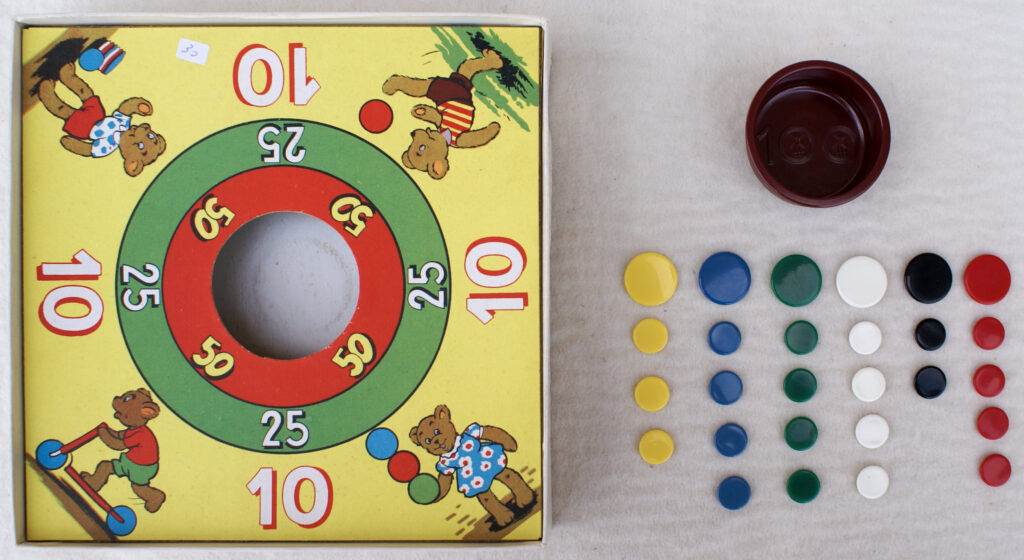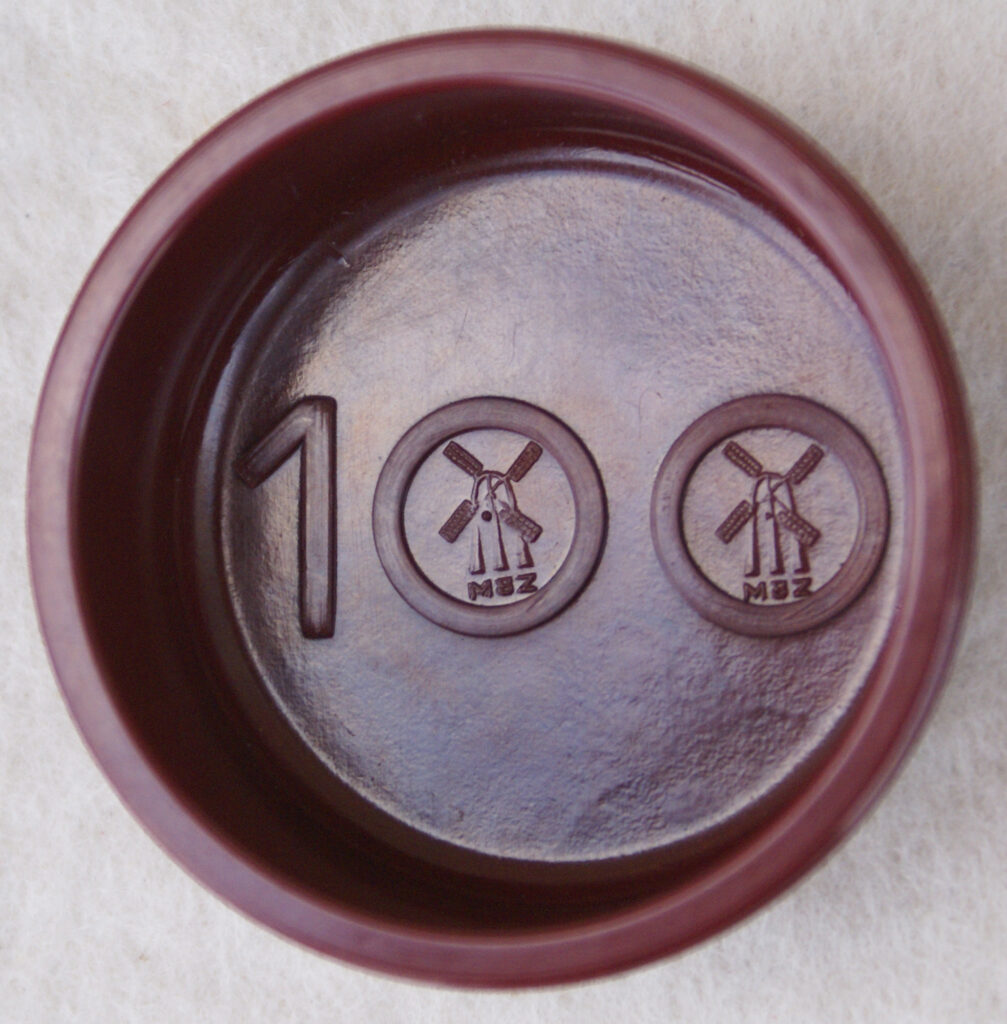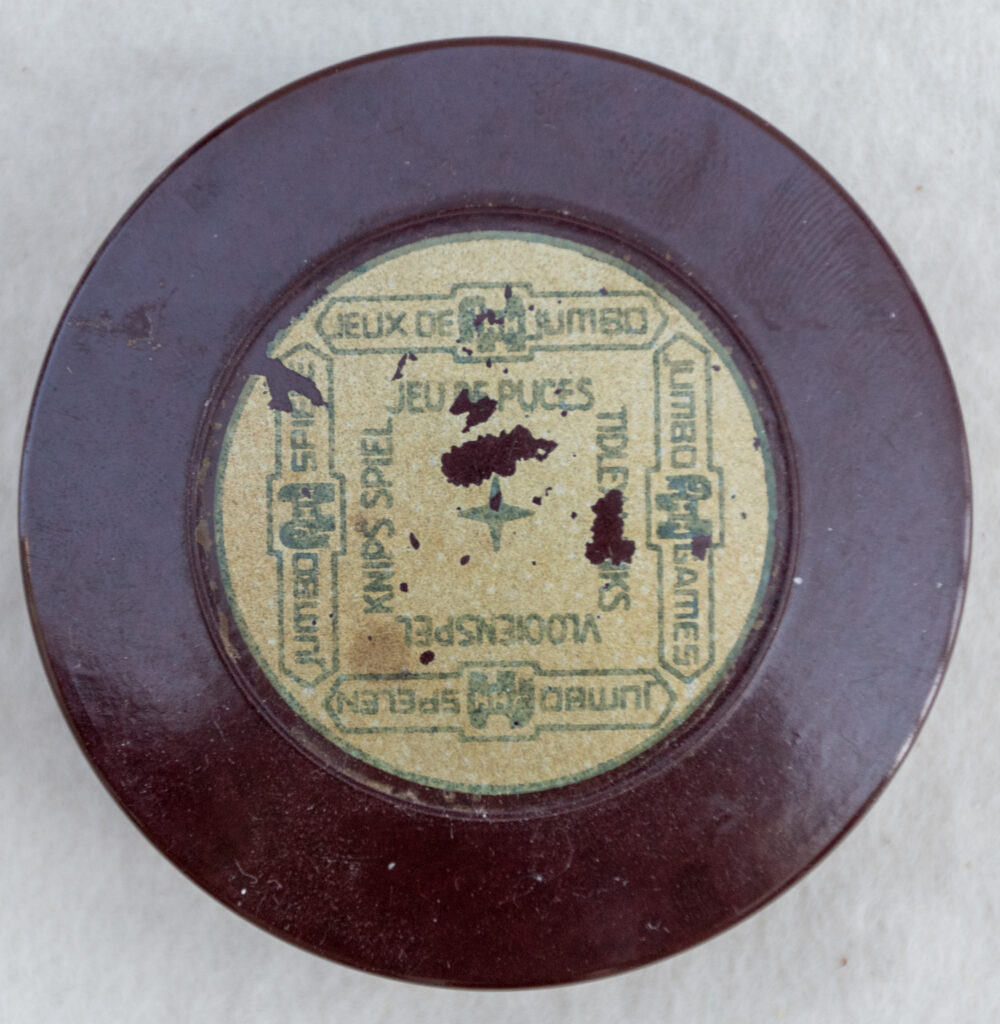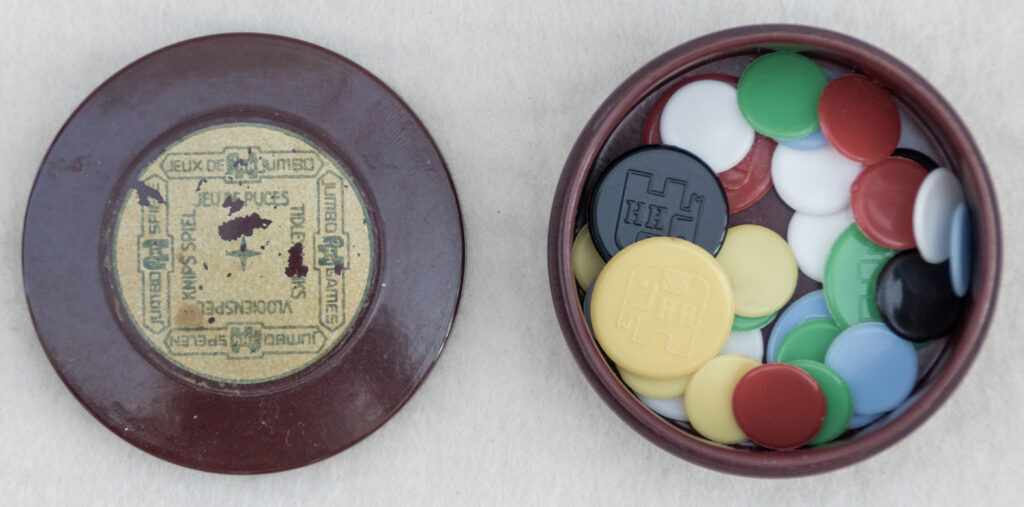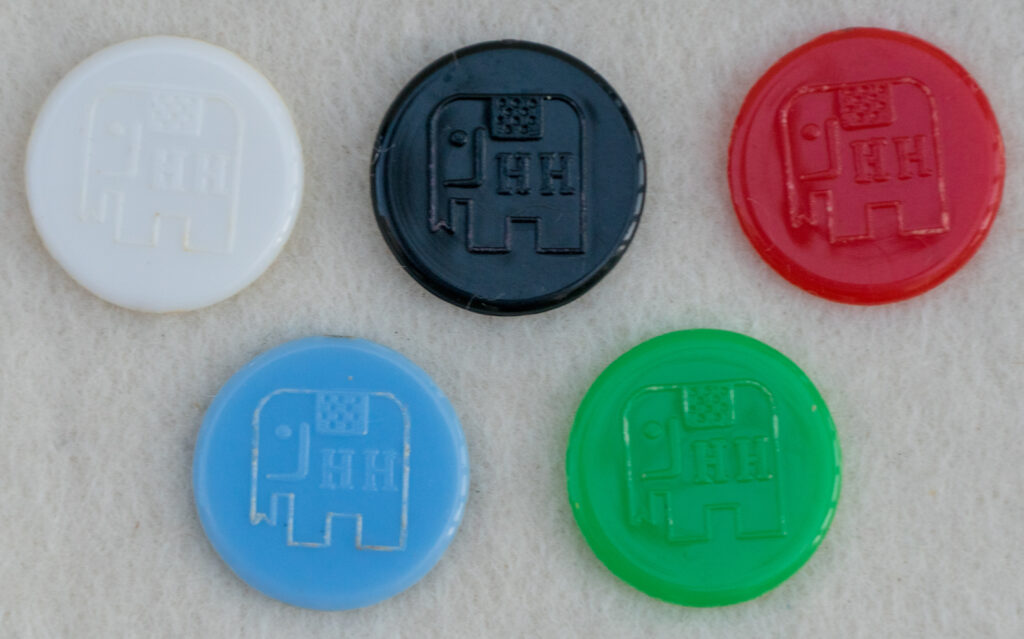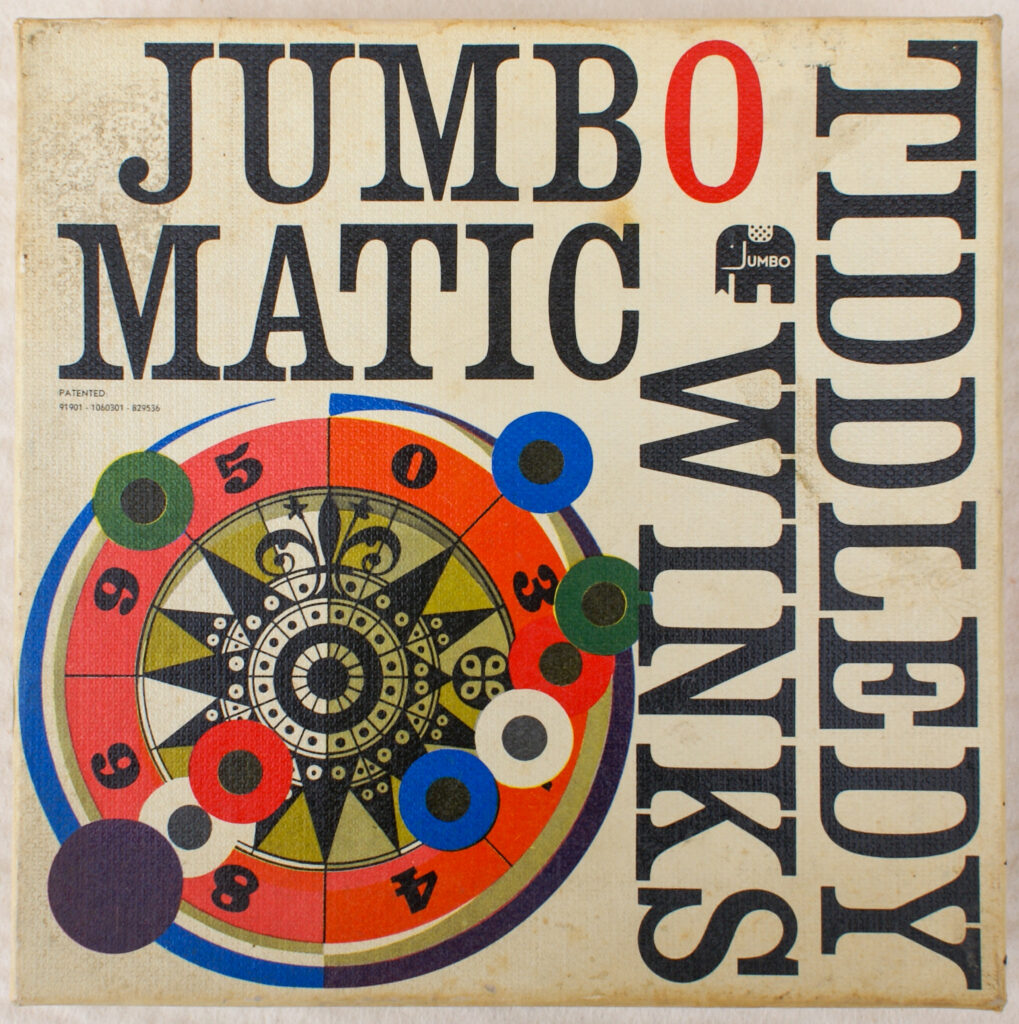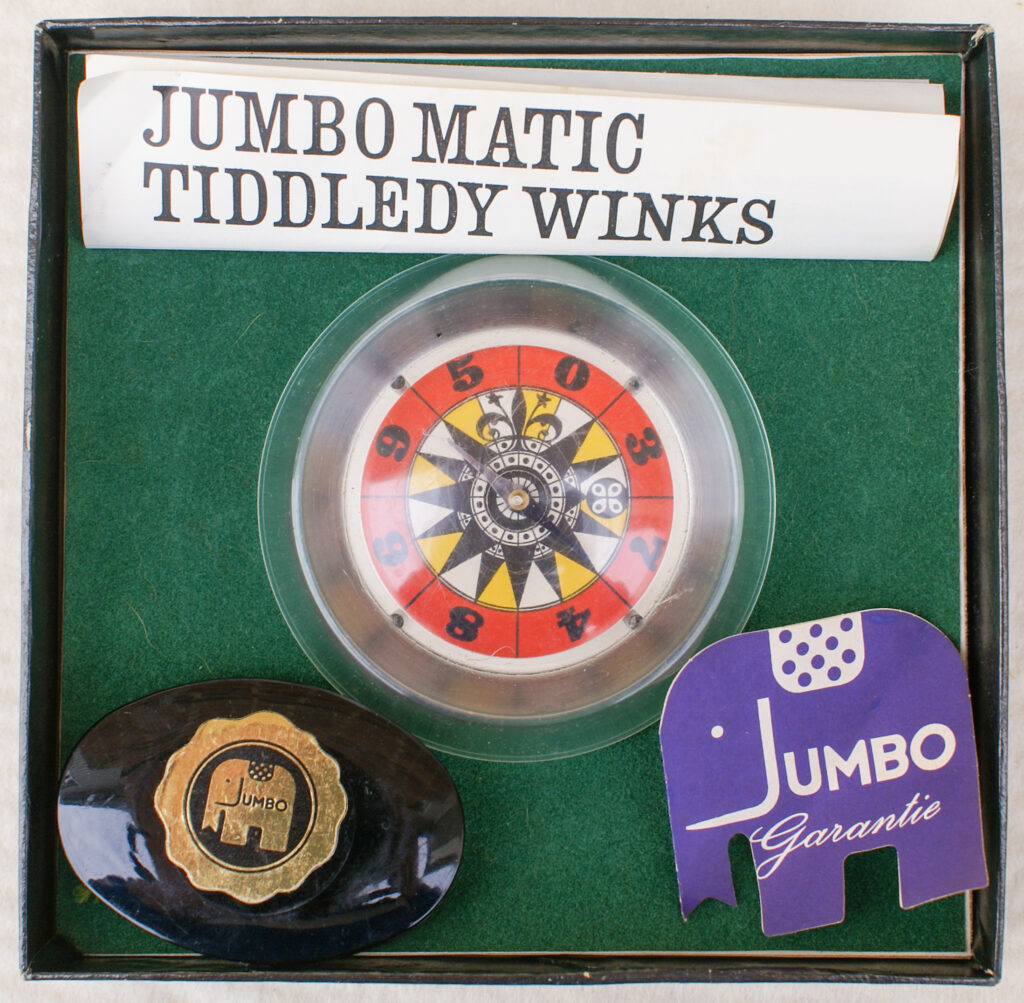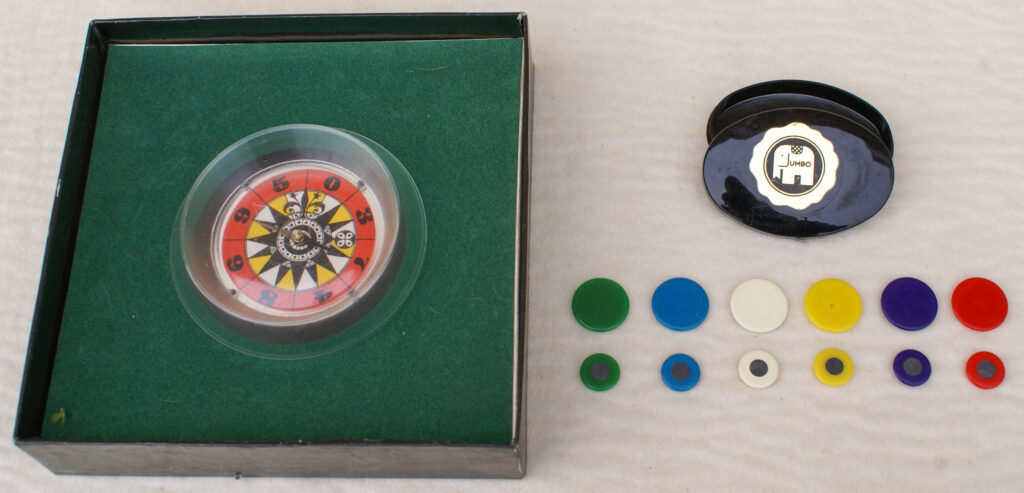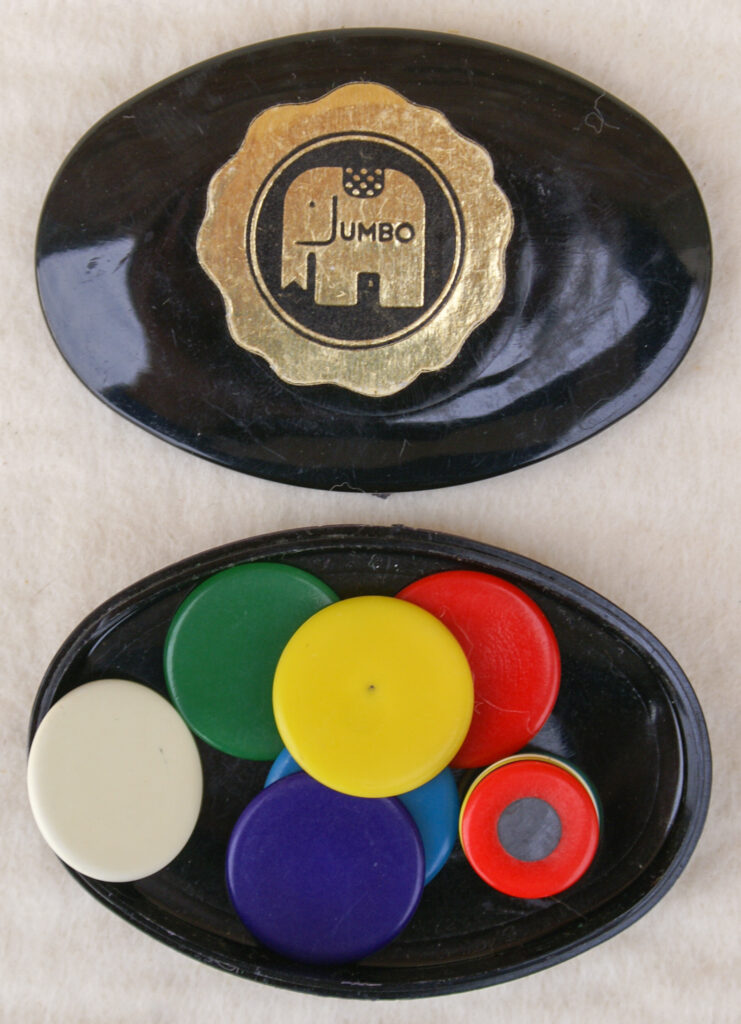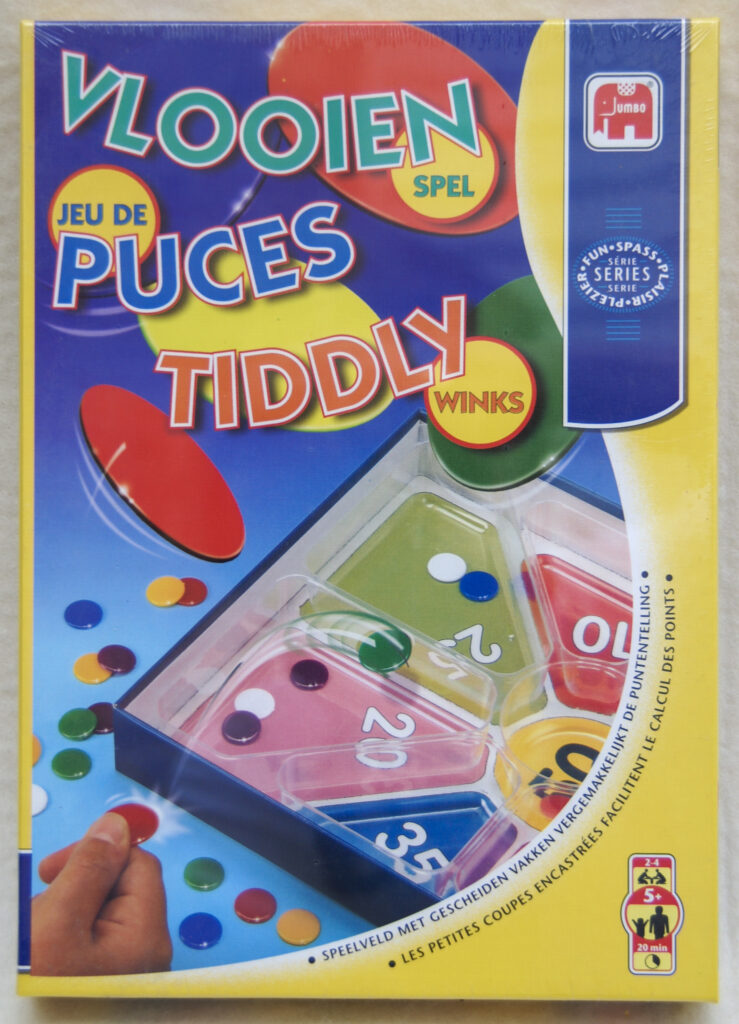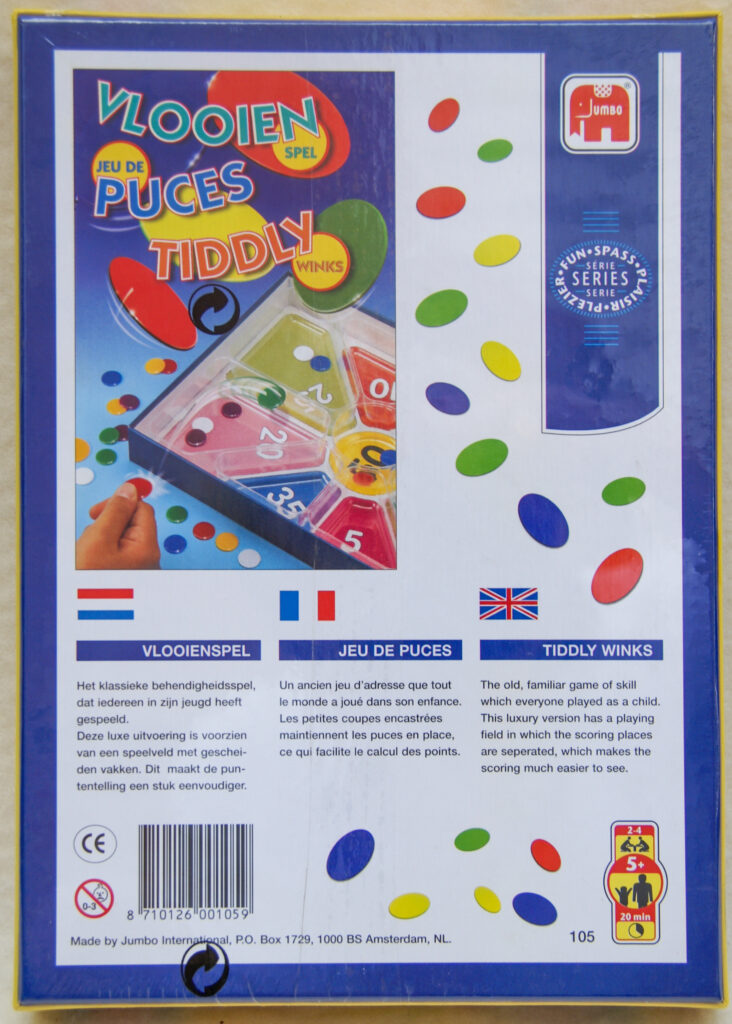The name of the game of tiddlywinks in the Dutch language is vlooienspel, which literally translates to flea game, which is what the game of tiddlywinks also transliterates to in most European languages. However, some of the earliest Dutch tiddlywinks games bear the name of Tiddledy Winks, the original English name of the game.
Unknown Dutch Publishers
The following basic game of tiddlywinks, with rules in the Dutch language, includes no information identifying the publisher nor the date it was issued. Though indeed, the name of the game on the cover and the rules is Tiddledy Winks (the English name of the game) and not Vlooienspel.
Note that the “i” and “y” letters in “Tiddledy Winks” on the cover each have an accent over them, as “í” and “ÿ”, which was more common in Dutch in the early 1900s. This undated game is estimated to be from the 1910s to 1930s.
Tiddledy Winks.
Scheme of the game.
Two or four people can participate in the game, and where possible, place a thick cardboard on the table.
At the start of the game, a game is formed by the players. Each then receives six or four winks (called fleas) and a large wink of the same color, which belongs to it, to press the small wink so it jumps into the cup placed in the middle of the table.
The players place their winks in a row in front of them, all equidistant from the cup. Once the players have released their first wink in turn, they can start with another wink of its color, no matter which way when it is their turn again. If a wink lands in the cup, the player may shoot it again. In any other case, each player shoots only once, and consecutively.
Whoever manages to shoot all his winks into the cup first is the winner of the game. However, it can be agreed at the start of the game that the winner over the loser will be paid a fee, which will be adjusted according to the number of winks remaining until play. It is forbidden to touch the winks of the other party.
Should a wink happen to land on one of the participants' winks, it must wait until the player shoots a wink, in order to then be able to move forward with his wink. However, it is against the rules to interfere with the course of the game if one deliberately covers an enemy wink. If a wink falls to the ground, it must be returned to its former place.
Comments.
One can play it (tiddlywinks) in different ways.
In any case a circle is drawn around the cup with chalk 30 cm in diameter, and the following game method applies.
- Any wink that enters the circle is excluded from the game and does not count, and he who shoots the most winks into the cup is the winner.
- Every wink that comes into the circle must be returned to the owner, who, as soon as the turn comes to him, may shoot with it several times in succession.
- Any wink that falls into the circle gives the succeeding player the right to shoot it from one side of the table to the other side, as he pleases.
If he does not do so, the player of the wink has the right to play his wink again at the proper time.
H. 7217/4078
Rules • Tiddledy Winks, by unknown Dutch publisher, Tucker Tw ID • UNK-026c1, translated into English
The following Tíddledÿ Wínks includes Dutch rules with the same title plus a separate set of French rules using the French word for tiddlywinks, Jeu de Puces. However, the Dutch rules say that 2 or 4 players can play, while the French rules say 2, 3, 4, or 6 can play. Is it possible that these French rules were from another game and were added to this copy at some point? In comparing translations of the Dutch and French rules to English, it turns out they are pretty much identical. Plus, the font used on the rules for the titles Tíddledÿ Wínks (Dutch) and Jeu de Puces (French) is the same. Also note that only 3 sets of winks were found in the copy examined, even though the Dutch rules refer to 2 or 4 players playing. This discrepancy may be due to the loss of winks and squidgers over the years, which is quite a common phenomenon for tiddlywinks games. In some cases, nonoriginal winks and squidgers are added to copies of games.
This game is considered to be a Dutch game even though no publisher name nor country of origin is shown on it.
This game also the uses accented “í” and “ÿ” letters in “Tíddledÿ Wínks”. This undated game is estimated to be from the 1910s to 1930s.
Mulder & Zoon
The Dutch company of P. J. Mulder & Zoon (Mulder & Son, in English) was formed in 1871. They produced a number children’s books and games, often and depicting children on the games’ cover illustrations. The company was sold in 1975 to buyers outside the Mulder family.
The following game provides a telltale mark included on the inside the bottom of the tiddlywinks game pot, in which there appears the number 100, inside of which each zero portrays a windmill with the letters “M” followed by “&” and then “Z”, and hence identifying the game as made by Mulder & Zoon. In addition, the Mulder & Zoon logo with a windmill on top of a globe is shown on one of the aprons.
This particular game has no title nor other text on its cover. The simple target inside the game includes the plastic game pot, previously described, inside a thin cardboard target that contains numbered sections: namely 10, 25, and 50. “No. 315” appears on one of the aprons. The original HONGS.nl website dated this game as 1953.
The following untitled tiddlywinks game made by Mulder & Zoon has almost the same cover illustration as the previous one, but it is not as wide and it lacks some of the winks shown in the air on the yellow background of the cover. In addition, this game includes the “MULDER & ZOON N. V. AMSTERDAM” logo with a windmill on top of a globe in its upper left corner. Like the game above, this game has no title. The graphics around the numbered target inside the box are a bit different from the one above, though both use the same numeric values for the target areas. The plastic pot in the game is identical to the one shown in the game above, with the number “100” portraying the same windmills and letters of “M” and “Z” inside the zeros as the game above. “No. 316” appears on one of the aprons.The original HONGS.nl website dated this game as 1953.
Mulder & Zoon finally came out with a titled tiddlywinks game, Vlooienspel. This game drops the “& Zoon” from the name of the company and simply uses Mulder instead. BoardGameGeek states that the company started using the name Mulder without “& Zoon” in 1962. A more modern and stylized windmill logo is shown on the cover at the center of the game target. This game also bears the publisher catalog number of 316, shown on an apron.
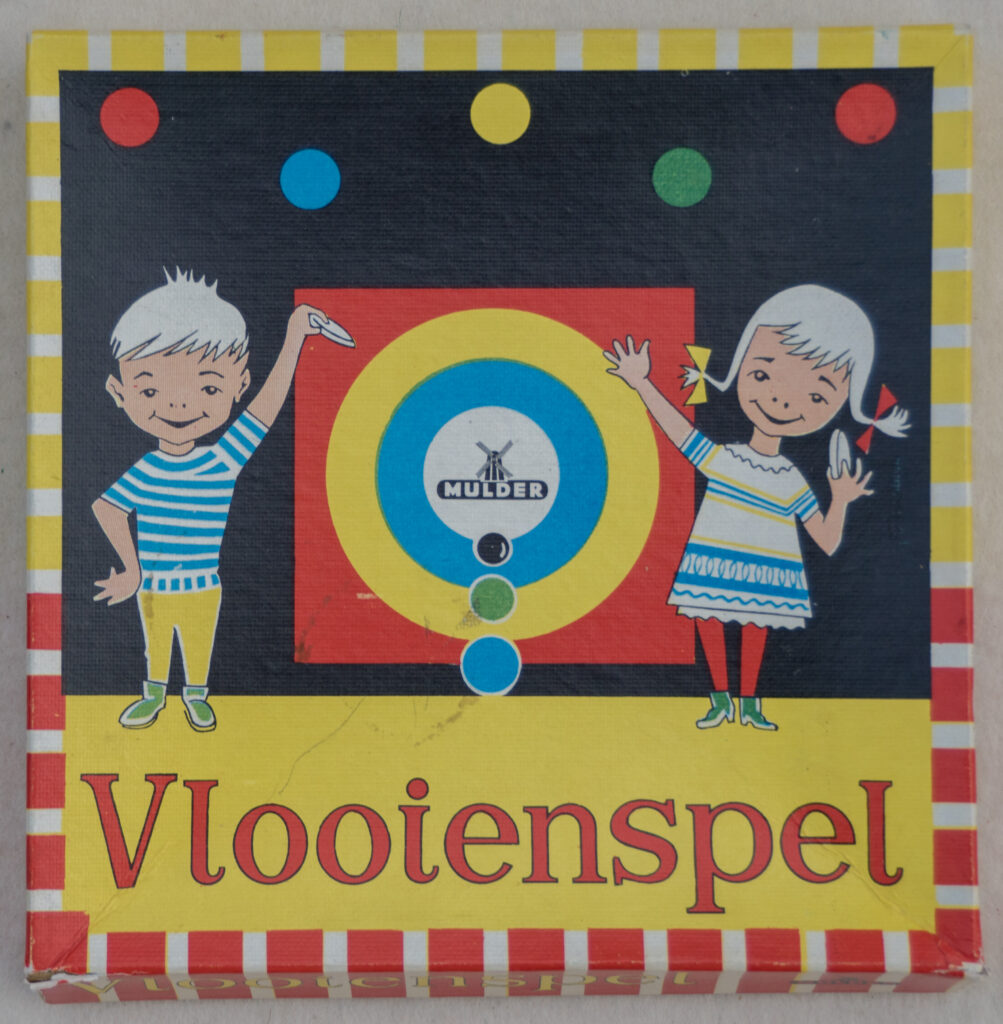
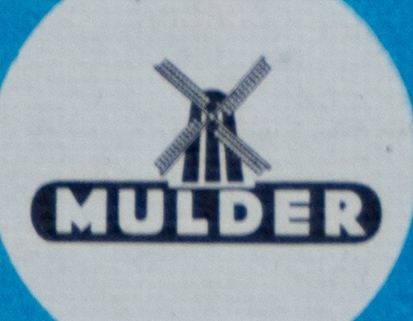
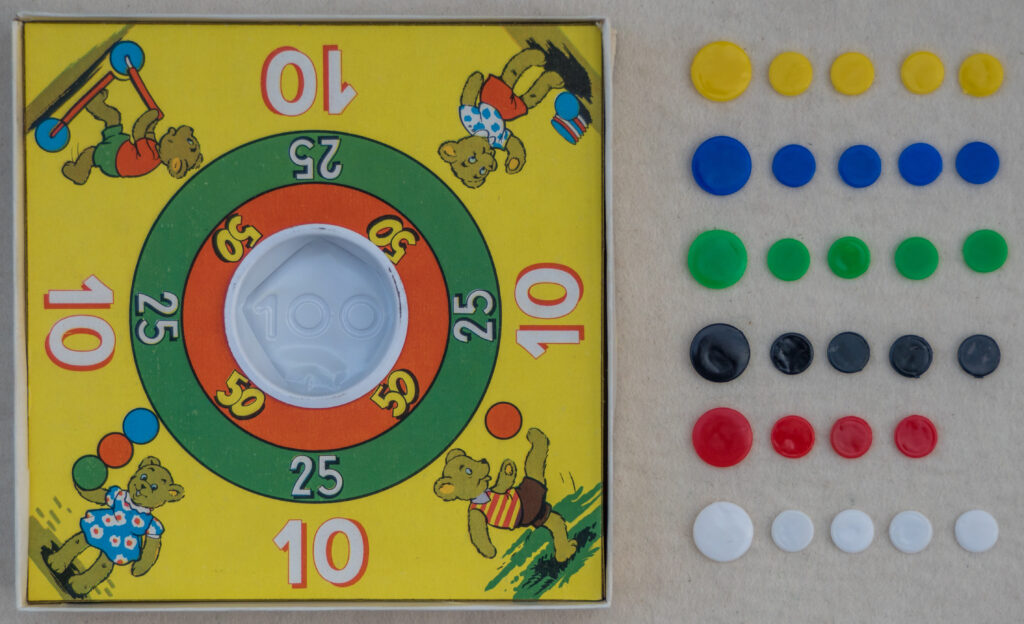
Jumbo
The Jumbo company (pronounced as Yumbo in the English world) in the Netherlands has been a prolific publisher of games and puzzles, including tiddlywinks, since its founding in the 19th century.
The particular Jumbo tiddlywinks game shown here comes in a cylindrical container. The label on the top of this game shows the name of the game in four languages, which was quite innovative for the time. The name of the game on this top label appears as KNIPS SPIEL (snap game, in German), JEU DE PUCES (in French), TIDLEYWINKS (partially obscured, in English), and VLOOIENSPEL (in Dutch).
The cover label of this game portrays the Jumbo company name in each of associated languages shown, namely: Jumbo Spelen (Dutch), Jeux de Jumbo (French), Jumbo Spielen (German) , and Jumbo Games (English).
Each of the squidgers in this tiddlywinks game has a stylized elephant, which is the primary Jumbo logo, embossed on it, with the letters “HH” on each of the elephants. “HH” is an abbreviation for Hausemann & Hötte, the two men who formed the firm in 1853: Engelbert Hausemann and Wilhelm Hötte.
While the exact date for this game is unknown, it is estimated to be from the 1950s.
JUMBO MATIC TIDDLEDY WINKS was issued under the Jumbo brand. The game cover and rules both indicate that the game was patented, with the following numbers shown both on the cover and on the rules: “91901 1060301 829536”. Indeed, one element of this tiddlywinks game was patented in the UK, GB829536A, by Leendert Jan Albert den Drijver of Wageningen, The Netherlands, who originally submitted the patent application on 27 August 1958, which was granted on 2 March 1960. Here’s an extract from the patent describing the unique element warranting the patent:
The object of this invention is to provide new or improved requisites such that the game will be more attractive to the competitors and involve a definite factor of chance. Therefore, according to thils invention, there is provided, for use in playing the game of tiddlywinks, a cup and a plurality of vaulting-discs, such cup being provided with a dial carrying a plurality of readings and with a pointer which is pivoted within the cup so as to be freely movable to indicate various dial readings, the said pointer and said vaulting-discs being formed of, or at least comprising, such materials that, when the pointer is approached by any one of said discs, a magnetic force is exerted by the one on the other. It will be understood that, when a vaultingdisc lands in the cup, the pointer will be influenced by the magnetic field which has been varied owing to the presence of the disc, and consequently such pointer will turn and will take up a new position. The pointer thus indicates one out of the possible readings on the dial each time a vaulting-disc lands in the cup. [Price 3s. 6d.] Consequently, the scores obtained by different competitors for snapping a vaulting-disc into the cup may be different and a greater winning chance is thereby given to the competitors who are less experienced in the game than is the case in the conventional game.
UK patent GB829536A, granted 2 March 1960.
The same unique element of a tiddlywinks game was also patented by den Drijver in Germany as DE1060301B, with the application submitted on 13 September 1958 and the patent granted on 25 June 1959.
Rules included in this game are provided in Dutch, French, German, English, Swedish, and Danish. The publisher catalog number of 112 is shown on one of the aprons.
In 2023, the Jumbo Royal BV company was still operating and thriving after 169 years, though as of 2023, it wasn’t offering any vlooienspel/tiddlywinks games in its product line.
Here’s a Jumbo International tiddlywinks game from the modern era. The date of this sealed game is not known, but is estimated to be in the 1980s or 1990s. The title appears in three languages: VLOOIENSPEL (Dutch), JEU DE PUCES (French), and TIDDLY WINKS (English). As shown in the pictograph at lower right on the cover, this game is designed for 2–4 players, aged 5 plus, and each game is projected to required 20 minutes. The game has a publisher catalog number of 105, as indicated on the bottom of the box, along with a Universal Product Code.
